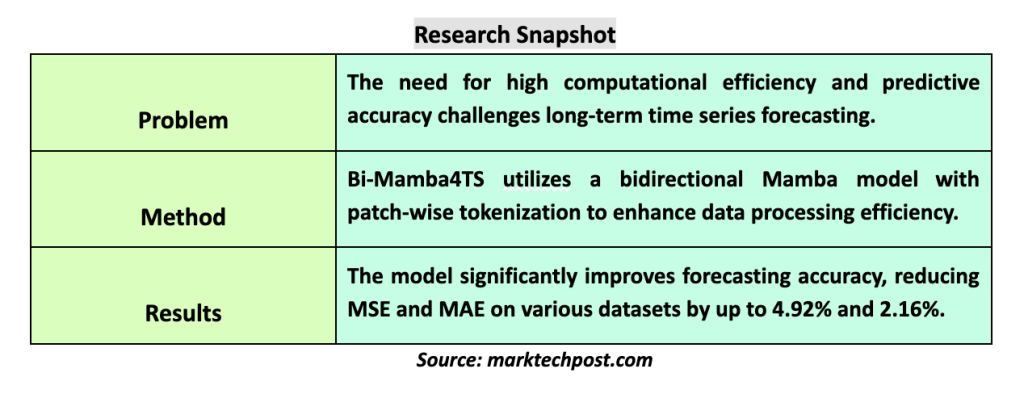Time series forecasting is increasingly vital in many sectors, such as meteorology, finance and energy management. Its relevance has increased as organizations aim to predict future trends and patterns more accurately. This type of forecasting is essential to improve decision-making processes and optimize resource allocation over long periods. However, making accurate long-term forecasts is complex due to the inherently unpredictable nature of the data sets involved and the significant computational resources required to process them.
Historically, recurrent neural networks (RNN) and convolutional neural networks (CNN) have been used to handle these predictions. While RNNs are adept at processing data sequentially, they often fall short on speed and struggle with long-term dependencies. Alternatively, CNNs can process data in parallel, speeding up training times, but at the cost of losing the ability to effectively capture long-term dependencies. Recent advances have seen the implementation of Transformer models, which address some of these issues by using self-attention mechanisms to map relationships in data over time. However, these computationally intensive models limit their usefulness for long-term forecasting.
Researchers from Beijing University of Posts and Telecommunications, China, present Bi-Mamba4TS, a novel approach using a two-way Mamba model for time series forecasting. This model integrates the state space model (SSM) framework with a bidirectional architecture, enhancing its ability to effectively process and forecast from large time series data sets. The Bi-Mamba4TS model stands out by using patching techniques to enrich the local information content of time series data, allowing it to capture evolutionary patterns at finer granularity.
Bi-Mamba4TS operates by tokenizing input data using channel mixing or channel-independent strategies tailored to the characteristics of the data. This flexible approach allows the model to adapt its processing strategy to maximize accuracy and efficiency. The model performance has been rigorously tested on multiple data sets, showing notable improvement in forecast accuracy. For example, the model consistently outperformed traditional and newer forecasting methods on several data sets, such as weather, traffic, and electricity, by significantly reducing mean squared errors (MSE) and mean absolute errors (MAE). .

Extensive testing results show that Bi-Mamba4TS achieves superior forecasting performance. On seven widely used real-world data sets, the model improved predictive accuracy with lower MSE and MAE scores and demonstrated its ability to handle different data complexities effectively. For example, in tests involving weather and traffic data, the model's bidirectional approach allowed it to excel at capturing intricate dependencies within multivariate time series, reducing the MSE by up to 4.92% and the MAE by 2. .16% on average compared to the best existing Transformer models. .

In conclusion, the research on Bi-Mamba4TS addresses the important challenges in long-term time series forecasting by introducing an innovative bidirectional Mamba model. This method improves computational efficiency and predictive accuracy through sophisticated patch tokenization techniques, adapting to various data characteristics.
This advancement sets a new standard in forecasting technology, offering a powerful tool for researchers and industries that depend on accurate long-term predictions.
Review the Paper. All credit for this research goes to the researchers of this project. Also, don't forget to follow us on twitter.com/Marktechpost”>twitter. Join our Telegram channel, Discord channeland LinkedIn Grabove.
If you like our work, you will love our Newsletter..
Don't forget to join our SubReddit over 40,000ml
![]()
Asif Razzaq is the CEO of Marktechpost Media Inc.. As a visionary entrepreneur and engineer, Asif is committed to harnessing the potential of artificial intelligence for social good. His most recent endeavor is the launch of an ai media platform, Marktechpost, which stands out for its in-depth coverage of machine learning and deep learning news that is technically sound and easily understandable to a wide audience. The platform has more than 2 million monthly visits, which illustrates its popularity among the public.
<script async src="//platform.twitter.com/widgets.js” charset=”utf-8″>
 NEWSLETTER
NEWSLETTER




